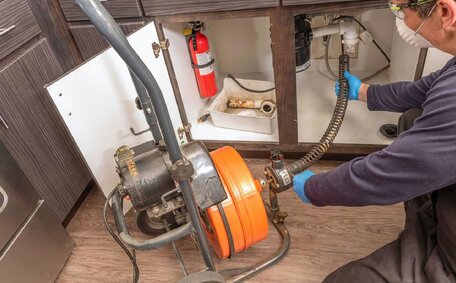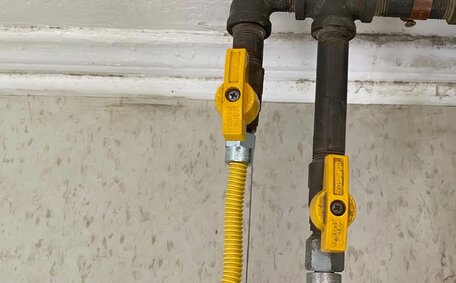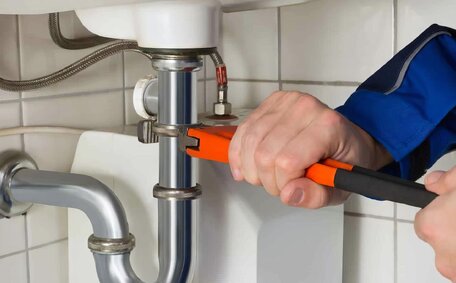What is a water booster pump system?
A water booster pump system increases water pressure in buildings or properties where the existing municipal supply falls short. These devices use centrifugal force and electric pump impellers to increase water pressure to optimal levels.
Pressure boosters are vital for situations where the city water supply cannot provide adequate pressure to plumbing fixtures, taps, showers, and appliances. Low water pressure instances often prompt homeowners to consider a booster pump, especially when facing issues like:
- Poor water flow from taps and showers
- Boosters improve water fill rates by reducing fill times for bathtubs and appliances.
- Malfunctioning appliances like dishwashers and ice makers
- Inability to run multiple fixtures at once
Installing a variable speed drive (VSD) booster pump, complemented by pressure tanks and sensors, can uniformly increase fluid pressure, solving low-pressure issues.
A home booster pump can be critical for maintaining household water pressure in high-rise buildings and remote domestic water applications, ensuring adequate pressure for residences with intricate bathroom setups and varied water needs.
Selecting the right water booster pump entails choosing a unit that supplies sufficient pressure and flow rate for your household’s and mains water’s demands, ensuring optimal performance. Professional advice is essential to integrate booster systems with existing plumbing and maintain consistent pressure.
When do you need a water booster pump?
There are several common scenarios where boosting the water your household receives becomes necessary:
Low Water Pressure
If water pressure in your home or building drops below 30 psi, this is considered inadequate and often calls for a water pressure booster pump. Fixtures and appliances will not function properly without the additional pressure that a booster pump does provide, indicating the need for such an installation. Understanding how pumps work and verifying if the booster pump meets your needs, is the solution.
High-Rise Buildings
In multi-story buildings with complex water systems, water pressure typically drops by approximately 2 psi per floor as it rises, often requiring booster pump solutions. Devices that pumps increase the water pressure efficiently are key to consistently servicing upper levels of multi-story buildings.
Large Properties
Facilities or rural properties located far from local water lines are applications where a booster pump can assist in increasing flow and diminishing substantial pressure loss. A booster pump can significantly increase flow and compensate for this loss.
Industrial Applications
Processes like irrigation, hydroponics, laboratories, cleaning, and machinery often necessitate pushing water out with high water pressure flow rates or pressure beyond standard plumbing levels - making a booster pump necessary.
Consult a plumber to check your system if you confront recurring low pressure issues or need water booster technology for unique needs requiring a robust system to move water more effectively, to evaluate whether a booster system is required.
Signs you may need a booster pump
There are several clear signs indicating your home may require a booster pump system:
Prolonged Time to Fill Tubs or Appliances
A bathtub taking over 10 minutes to fill or appliances requiring more than 30 minutes per cycle suggest low water pressure issues.
Weak Flow from Fixtures
Low water pressure can cause noticeably weak shower spray, dripping taps, and poor flow from water fixtures throughout the home.
Inconsistent Water Pressure
A booster pump can effectively stabilise inconsistent water pressure throughout your home.
Failing Pressure Tests
Perform a 1-litre jug test to gauge the water volume per minute and determine your household’s water pressure. Times over 30 seconds indicate low pressure requiring a booster pump.
Consult a professional plumber if challenges such as insufficient outlet pressure emerge in your home, to assess if you need a water booster pump and whether a building-wide booster system is necessary.
Selecting the right booster pump for your needs
Choosing the correct booster pump for your property involves understanding how the pump curve influences performance and assessing a few key steps:
Assess Your Water Pressure
A professional plumber can test water pressure to identify the existing municipal supply levels, including any fluctuations and losses within your plumbing. This creates a definite benchmark to size the booster pump in correspondence with your water pipes.
Determine Pump Type
Compare single-stage boosters (up to 145 psi) with multi-stage models for higher pressures, depending on your requirements. Consider which fits your pressure goals.
Match Flow Rate Capabilities
Select a pump model that provides the necessary flow rate for your property’s peak demand. With high-flow fixtures or appliances, understanding how a water booster pump operates is vital to select the correct pressure enhancement.
Consider Pressure Rating
Opt for a pump with a pressure rating 20% higher than required to handle potential demand spikes and future system expansion.
Experienced plumbers consider various factors beyond the basics to recommend the ideal booster pump with appropriate valves, sensors, and controls for your system.
Key features to consider when choosing a pump
Choosing the optimal pump entails understanding the diverse features of booster pumps and discerning which are crucial for your property:
Pump Rating (Bar or PSI)
The pressure rating indicates the maximum pressure the pump can deliver. Choose a pump rated at least 20% higher than your target pressure.
Flow Rate
Ensure the pump’s flow rate matches your property’s peak water demand, with high-flow pumps best for multiple high-flow fixtures.
Impeller Type
Open or closed impellers are tailored to meet the specific pressure requirement of applications, especially when boosting water pressure is critical. Your plumber will recommend the most suitable impeller type.
Multi-Stage Design
Multi-stage pumps can achieve the required pressure head, building higher pressures than single stage models if very high pressure is needed.
Integrated Controls
Fully integrated speed pumps equipped with a pressure switch, sensors, and cutting-edge variable speed drives provide for seamless performance and complete system integration.
Consult your professional plumber to ensure the pump system aligns with your property’s requirements for efficient performance.
Installing and maintaining your booster pump
The complex task of installing water booster pump systems, crucial for efficient water distribution, is best handled by professional plumbers. There are legal considerations around backflow prevention, pressure limiting and integration with existing plumbing that licenced technicians can navigate.
With importance placed on safety and efficacy, here are several best practices for DIY enthusiasts:
- Select a suitable location for the booster unit - ensure it has proper ventilation, service access, and is close to power sources. They should be installed on the main water supply line.
- Provide sufficient clearance around the unit for straightforward servicing and proper ventilation.
- Install separate inlet and outlet pipes, apart from the original supply lines.
- Add an expansion tank to help the pump manage demand fluctuations and enhance durability.
- Fit a pressure gauge for straightforward monitoring of system performance.
Routine booster system maintenance includes monitoring pressure gauges, listening for unusual noises, maintaining storage tank pressure, and obtaining yearly professional servicing.
This prevents issues like pressure spikes, water hammer, leaks and component failures - helping ensure your booster system provides a consistent water supply for years to come.
Compliance and regulations for booster pumps
To install booster pump systems comes with important legal and compliance considerations. Adhering to local plumbing codes and regulations is critical.
A licensed plumber will handle concerns such as clogged pipes, backflow prevention, and pressure limiting, ensuring installation adheres to the Plumbing Code of Australia and AS/NZS 3500 standards.
Key areas a professional considers:
- Backflow preventers safeguard the mains by preventing water from reversing its flow, maintaining pressure within pressurised zones.
- Pressure limiting valves activate to maintain safe pressure levels when readings exceed 80 psi.
- Noise levels and vibration controls.
- Electrical safety standards for pumps and integrated controls.
- Metering guidelines for pumped water supplies.
Navigating these technical requirements and completing necessary council and utility provider paperwork is where working with professional plumbers pays dividends. They guarantee your system is fully compliant for safety and reliability.






